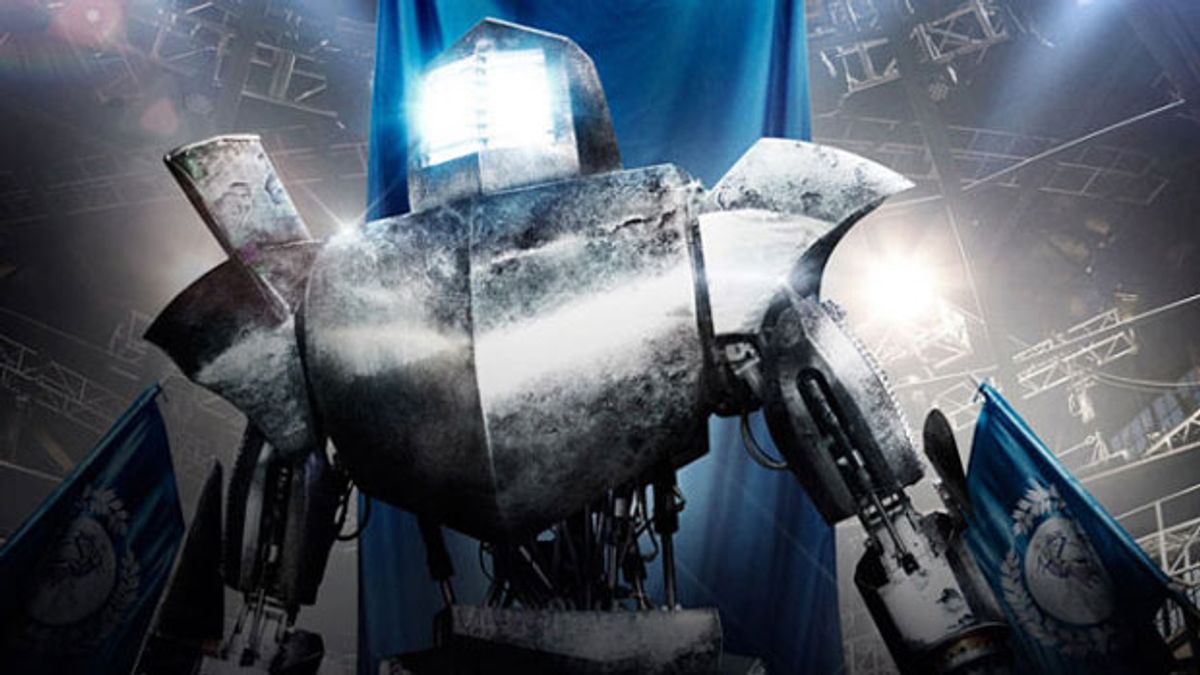Tonight at 10/9c, the Syfy channel airs another episode of Robot Combat League. It'll feature Carnegie Mellon PhD student, Robot Film Festival organizer, and overall friend of the blog Heather Knight driving a gigantic humanoid combat robot and trying to beat the screws out of another gigantic humanoid combat robot. "For me, it was really exciting to see actual, real robots instead of CGI characters," Heather tells us. And that, in a nutshell, is why it's worth giving this show a look.
Heather is the robo-tech for team Medieval, driving the lower half of a giant hydraulic humanoid boxing robot whose top half is controlled by John Peel, a former college football player and personal celebrity trainer. Like we said, there's no CGI going on here, this is an actual crazy teleoperated giant robot that's designed to, you know, box. If you've never heard of this, here's a trailer:
Check out our conversation with Heather about her experiences on the show:
Q: How the heck these robots manage to be so big and awesome without breaking down and falling over all the time?
A: I first talked to the producers almost two years ago, when they were much earlier in the development process. They were telling me what their concept was, and I asked them if they had a robot, and they said "no, we haven't started on that part yet." So I was like, "I don't think you realize how hard that's going to be, making humanoid robots that can stand and not fall over immediately." Obviously, their solution, with this 'T' crossbar that provides some structural support, is what makes the show possible.
The 'T' bar is the hero of the show. It really is. I don't think that people realize how impressive it is that these things can take so many punches and not shatter. The robots are still able to walk and move and withstand punches, but they don't need to have complex balancing algorithms and things like that. As someone who was a mechanical engineer before I switched to electrical engineering and then just robotics in general, I thought that they came up with a really clever solution that still enables you to feel a very strong sense of character in the design of the machine.
Q: What's it like to drive one of these robots?
A: You've definitely got some of that surrogate feeling. The techs were working much more with the footwork, so it's really important for us to work in coordination with the top half, which is the one that's doing the hits. I think it's a little more important for defense; it's important to get in position for offense too, but if you don't move away when people are railing on you, then that's difficult. The controllers were definitely interesting: I really like physically embodied machines in general, but it's one of the first experiences in my life where I wished I'd spent more time playing video games, that would have really helped me with the controls.
The same physical structure, the same underlying design is the basis of all the robots. They're equivalent in that way, but because of the weight and protective capacity of the armor and because of the different weapons, that does change how easy some of these machines are to damage. It's like playing Pokemon: sometimes you have robots with attributes that are well matched, and sometimes you don't.
Q: And what happens when they break?
A: My passion is designing robots, and part of the design process is making things easy to fix when they break, and if there are going to be breaks, having them break in ways that are easy to fix. It's our responsibility to assess damage, and decide what the most important things are to work on to get the robot back out there. We can work with the team to find out what's going wrong and where to find the right tools to fix things. As you go farther into the season, you'll see people getting to know their robots better, because really the first time that we're trying to fix these is when they're broken. As anyone who's taken apart all of the appliances in their house knows, that's one of the best ways to get to know a machine. You can think a lot about strategizing and theory, but it's in action that you learn how to make things happen.
Q: What was the most exciting part about being on the show?
A: What I took away from this experience was getting to play with these incredible, crazy machines that it would be very difficult to otherwise afford to build for myself. I'm really excited for the potential for there being a new type of competition that involves robots, that very much speaks to storytelling because of the physicality and the humanoid form. Obviously, my big thing going into this project was like, "I want to make it dance and jump around!" I'd love to play with this platform in a more expressive setting, but it was actually kind of cool having them be avatars as well. Then you basically have a human behind the curtain, so you have this crazy physicality, and then you have the people stuff behind that. So I think watching it, you care about the team, and you feel like the robot itself is an extension of who the people are that are fighting with it.
Heather and Medieval will take on a hopefully inferior robot named Steampunk on the Syfy channel at 10/9c tonight, but if you can't wait, you can watch the first episode in its entirety right here:
(Click to make non-tiny)
Evan Ackerman is a senior editor at IEEE Spectrum. Since 2007, he has written over 6,000 articles on robotics and technology. He has a degree in Martian geology and is excellent at playing bagpipes.






